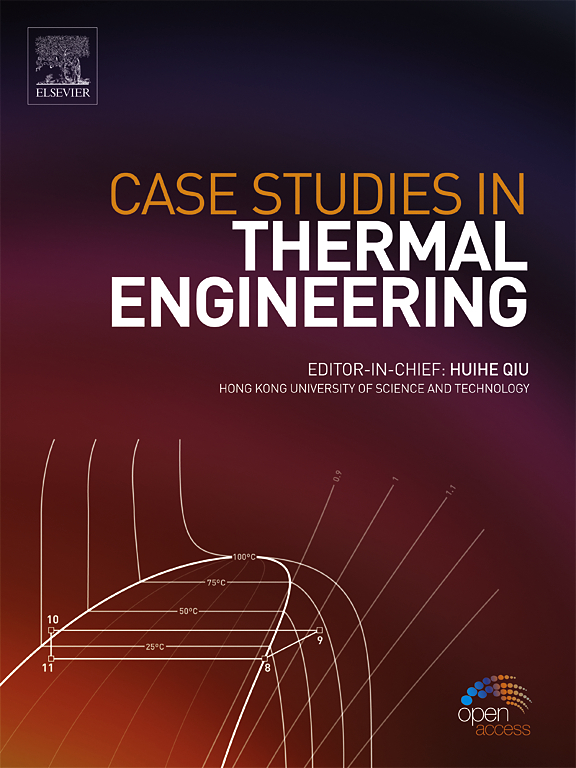Investigation on the influencing mechanism and quantitative evaluation of stirred heat effect in high-speed mechanical seals
IF 6.4
2区 工程技术
Q1 THERMODYNAMICS
引用次数: 0
Abstract
Stirred heat is much severe in mechanical seals under high-speed conditions, which significantly affects seal's heat transfer and dissipation characteristics. A three-dimensional thermohydrodynamic numerical model consisting of the fluid film, sealed chamber and sealing rings is developed to investigate the influencing mechanism of stirred heat by the comparative analyses of fluid flow, heat generation and transfer and evaluates its influence level by the parameterized analyses about the rotational speed, flushing flow rate, sealing pressure and sealing face structure. Firstly, in terms of cooling flow, the cold fluid flow from sealed chamber into sealing gap is impeded by the high-speed shear effect of rotor outer sidewall, and a larger vortex namely a flow dead zone is generated at the spiral groove root due to the turbulent flow regime, which significantly impede the cooling level of fluid film and sealing end faces. Secondly, in terms of heat generation, because of the high-speed shear effect of rotor, a much larger effective viscosity, radial velocity gradient, turbulence intensity and turbulence dissipation rate are generated by the turbulent flow in sealed chamber, which are responsible for the significant stirred heat. Finally, in terms of heat transfer, the temperature difference between the sealing rings and sealing chamber fluid is narrowed by the stirred heat, suppressing the convective heat transfer level. The above phenomena lead to an increase in the overall and sealing face temperature rises, and a deterioration of the sealing performance. The rotational speed has the most significant impact on the stirred heat. At the most severe, temperature rise of stirred heat for seal is up to 34 %, the decrease of load-carrying capacity is up to 17 %. Increasing flushing flow rate has a positive effect on the dissipation of stirred heat. The sealing face structure hardly affects the stirred heat generation and transfer.
求助全文
约1分钟内获得全文
求助全文
来源期刊

Case Studies in Thermal Engineering
Chemical Engineering-Fluid Flow and Transfer Processes
CiteScore
8.60
自引率
11.80%
发文量
812
审稿时长
76 days
期刊介绍:
Case Studies in Thermal Engineering provides a forum for the rapid publication of short, structured Case Studies in Thermal Engineering and related Short Communications. It provides an essential compendium of case studies for researchers and practitioners in the field of thermal engineering and others who are interested in aspects of thermal engineering cases that could affect other engineering processes. The journal not only publishes new and novel case studies, but also provides a forum for the publication of high quality descriptions of classic thermal engineering problems. The scope of the journal includes case studies of thermal engineering problems in components, devices and systems using existing experimental and numerical techniques in the areas of mechanical, aerospace, chemical, medical, thermal management for electronics, heat exchangers, regeneration, solar thermal energy, thermal storage, building energy conservation, and power generation. Case studies of thermal problems in other areas will also be considered.
 求助内容:
求助内容: 应助结果提醒方式:
应助结果提醒方式:


